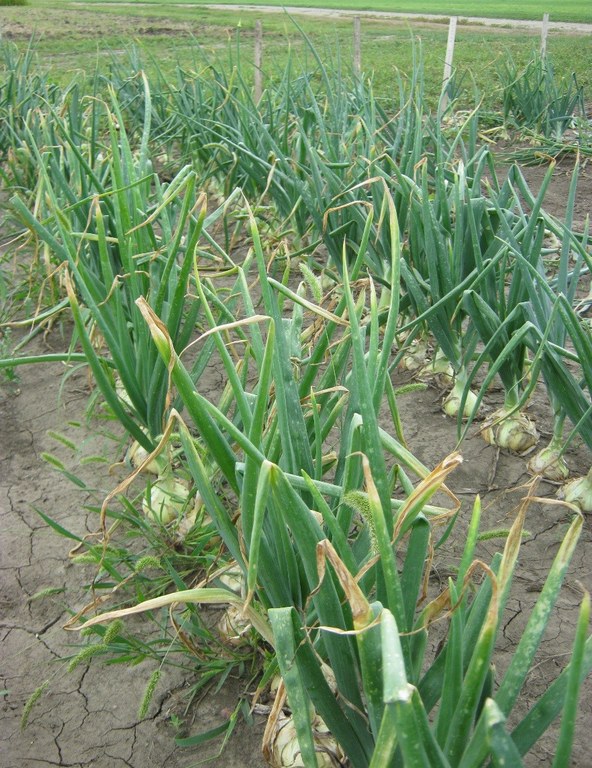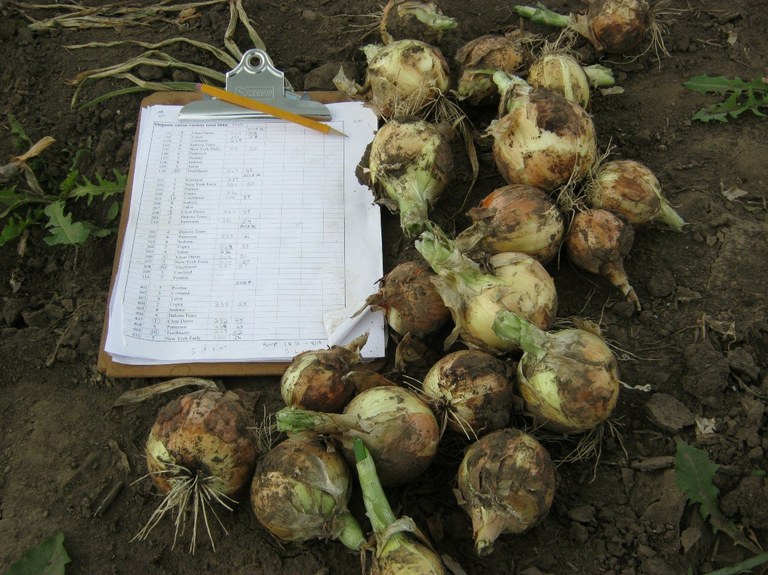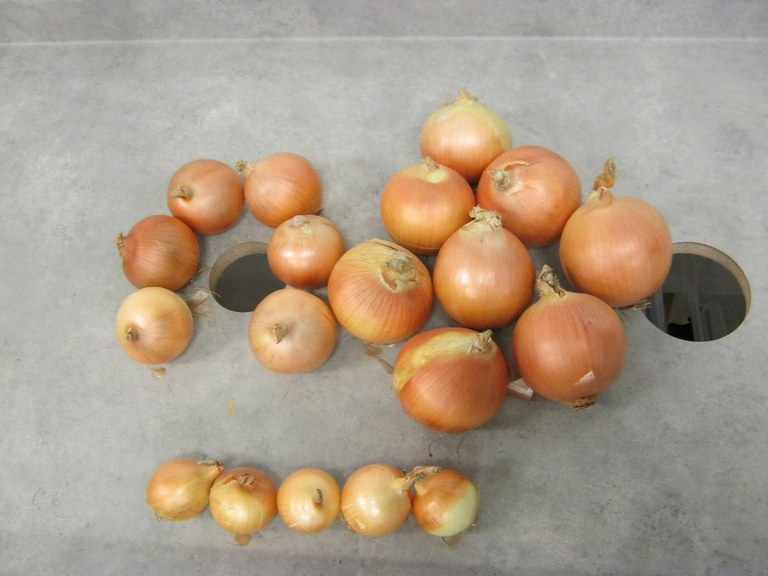Organic Onion Evaluation
The organic project at the Carrington Research Extension Center (CREC) is diverse and attempts to examine and serve multiple types of farming scale and marketing operations. This is accomplished with a broad range of topics through field research and the extension of information at the center. One area of field trial research that has recently been conducted on the certified organic land is onion trialing. The research is aimed at local food production, although data is still applicable to organic field scale production.
Local food production is quite evident in North Dakota with the growing interest in the development of farmers markets, CSA’s (Community Supported Agriculture), and buying clubs that have direct sales of produce, meat, eggs, baked goods, and more to the community. Local food grown on a limited acreage with direct marketing allows new personnel to begin farming where they otherwise may not be able due to the high cost of land and equipment associated with modern agriculture. This not only adds economically back to the local community, it has sociological implications as well by putting more people back on the land and keeping our schools and main streets open!
A field trial of organic yellow storage onion cultivars was conducted in 2016 at the CREC to look at the potential of this idea. All entries were F1 hybrids with the exception of one OP (open pollinated) variety. The OP variety, Dakota Tears, is a FDV (Farmer Developed Variety) that was bred by a local farmer, and is marketed nationwide through their own Seed Company, and seed catalogs across the United States. Seeds were planted in the CREC greenhouse on March 7 and seedlings were transplanted to the field on May 18-19. The previous crop was a radish cover crop evaluation trial. Row spacing was 24” with a 4” plant spacing using a single row arrangement. The trial was managed as dryland.

Picture 1. Entries growing in field on August 25, 2016.
Data gathered from this trial is not presented due to space limitations although the complete data table is available on the NDSU: CREC variety trial website. To summarize the results, a standard measure of maturity in onions is when 75% of the tops have tipped over indicating they have stopped growth and are in the process of drying down for harvest. Entries in this trial ranged from 94 to 109 days after transplanting for this parameter. Harvest dates ranged from the earliest entries on August 19 to the latest entry on September 12.

Picture 2. Field harvest of an early entry on August 25, 2016.
Harvest yields are determined by grading, sizing, and weighing each of the components. Yields are reported in cwt/ac, or hundred weight per acre. Think of hundred weight as a one hundred pound bag of onions. The onions were divided into standard sizes of: >4”, 3 to 4”, 2 ¼ to 3”, 1 to 2 ¼ “, <1”, and culls which are unsaleable onions. The majority (mean yield of 72 cwt/ac) of the onions were in the 2 ¼ to 3” size range, although sizes differed by each of the entries. Sedona had the greatest total yield of 288 cwt/ac, which adds up all of the various sizes. Sedona also had the highest yield of 198 cwt/ac in the 3 to 4” size. There were no onions >4” with the exception of Dakota Tears which had 2 cwt/ac for this size.
For the complete data set please use the below link:
 Picture 3. Dried onions on the grading table showing sizes, clockwise 1 to 2 ¼ “, 2 ¼ to 3”, and 3 to 4”.
Picture 3. Dried onions on the grading table showing sizes, clockwise 1 to 2 ¼ “, 2 ¼ to 3”, and 3 to 4”.
Yields achieved from this dryland organic trial are not as high as conventional irrigated yields gathered from previous research trials, however it is felt that the premium received is competitive and sustainable in many ways and is an alternative method of growing and marketing onions.
Steve Zwinger
Agronomy Research Specialist
Steve.Zwinger@ndsu.edu
Steve Schaubert
Research Technician


